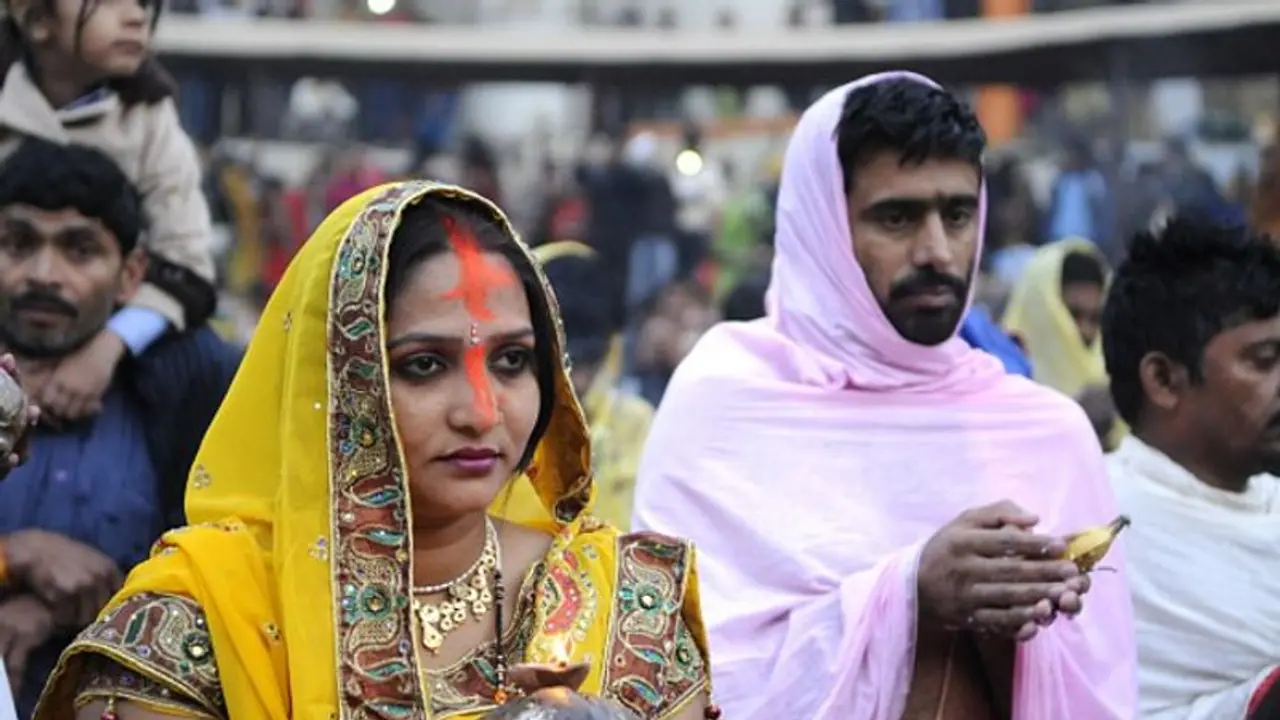The EAC-PM emphasized in a working paper that between 1950 and 2015, India witnessed a 7.82% decrease in the share of the majority Hindu population, while minority populations including Muslims, Christians, Sikhs, and Buddhists increased.
Between 1950 and 2015, India witnessed a significant shift in demographic trends, as highlighted in a study conducted by the Economic Advisory Council to the Prime Minister (EAC-PM). According to the study titled "Share of religious minorities: A cross-country analysis," the proportion of India's Hindu population decreased by 7.81%, settling at 78.06% by 2015.

Conversely, the study reveals that the Muslim population saw a notable rise of 43.15%, reaching 14.09% of the total population by 2015. Similarly, the Christian community also experienced an increase, growing by 5.4% to constitute 2.36% of the population during the same period.
Likewise, the study indicates that the Sikh and Buddhist communities experienced growth, reaching proportions of 1.85% and 0.81% respectively by 2015. However, the share of Jains and Parsis in the population declined, with figures standing at 0.36% and 0.004% respectively during the same period.
“We are interested in noting the composition of demographic changes in these countries because of their geographical proximity to India. Therefore, any significant fluctuation in their population has a spillover effect on the polity and policies of India,” the study reads.
According to the authors of the study, despite various discussions suggesting otherwise, the data indicates that minorities in India are not only protected but are also flourishing. This observation is especially noteworthy when considering the broader South Asian context, where the proportion of the majority religious denomination has risen, and minority populations have significantly diminished in countries such as Bangladesh, Pakistan, Sri Lanka, Bhutan, and Afghanistan.
Globally, there has been a noticeable decrease of approximately 22% in the share of the majority religious denomination, indicating a trend towards greater diversity during the study period. Across every major continent, more countries have witnessed a decline in the proportion of the majority religious group than an increase.
The study underscores the significant role played by the religion associated with the majority group in countries experiencing profound changes. It highlights that among the 20 countries witnessing the most substantial increase in the share of the majority religious group between 1950 and 2015, all of them are nations where Christianity or Islam-based denominations constitute the majority religious affiliation.
Conversely, the study also noted that among the 20 countries experiencing the greatest decline in the share of the majority religious group, only three had Christianity or Islam-based denominations as the majority religious affiliation. Instead, animism was predominant in 16 of these countries. This highlights the diversity of religious dynamics and the varying trends observed across different regions and religious traditions.
The council's study clarified that it focused on analyzing the numerical shifts in demographic representation rather than delving into the reasons behind these changes.
“India’s performance suggests that there is a conducive environment to foster diversity in the society. It is not possible to promote better life outcomes for the disadvantaged sections without providing a nurturing environment and societal support through a bottom-up approach. It is not surprising, therefore, that minority populations from across the neighbourhood come to India during times of duress,” the study noted.
The study noted a trend where several neighboring countries experienced a rise in the population of their dominant religious communities. In Muslim-majority nations, with the exception of Maldives, there was an observed increase in the proportion of the majority religious denomination. Among the five countries where Muslims are not the majority, only Sri Lanka and Bhutan saw a rise in the share of their dominant populations.
